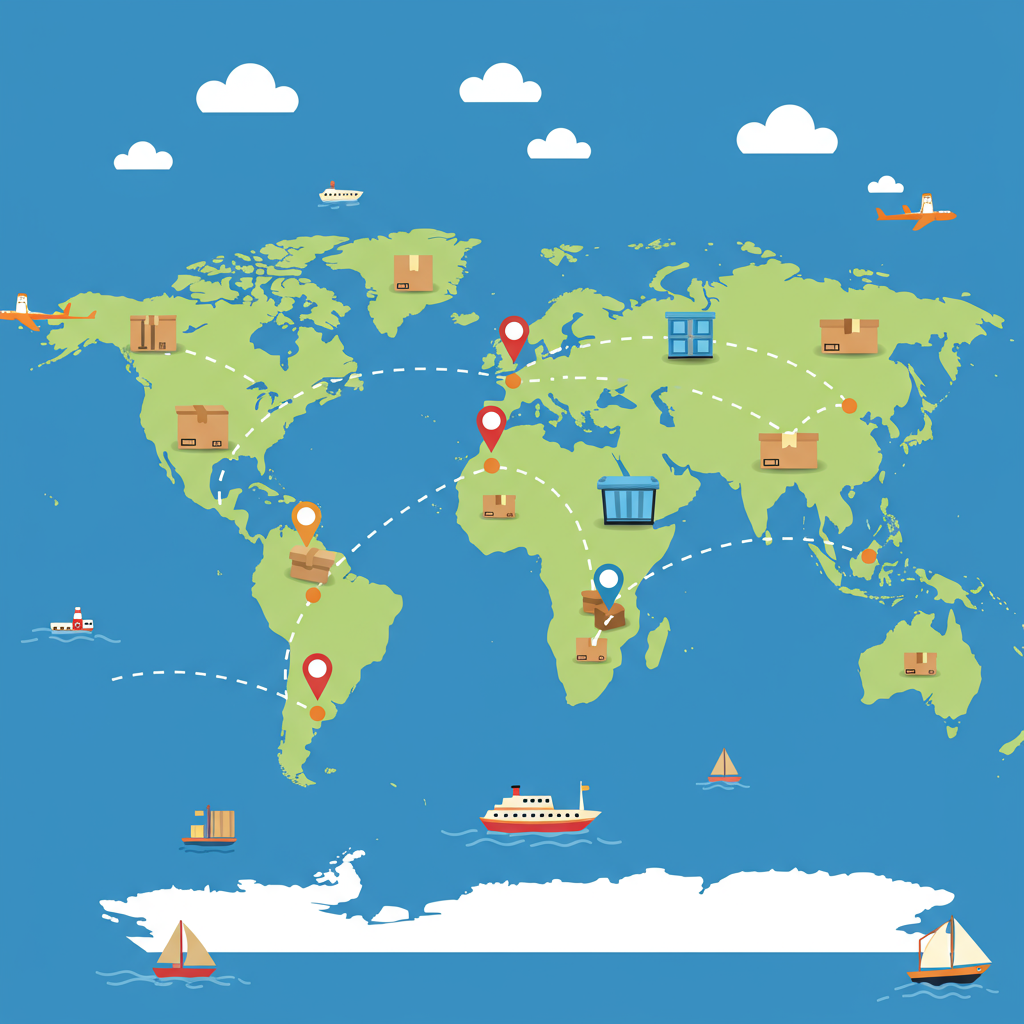A Comprehensive Guide for Merchants Navigating Cross-Border E-commerce with Confidence.
As a Shopify merchant, I know the thrill of a sale. But what about the excitement of an *international* sale?
Expanding your reach beyond domestic borders is a massive opportunity. It opens up new markets and customer bases you might not have even considered.
However, I also understand that international shipping can seem daunting. There are so many variables to consider, from customs to carrier choices.
That’s why I want to share my insights on building a robust Shopify shipping strategy specifically for international orders.
My goal is to help you navigate these complexities with confidence, turning potential headaches into profitable ventures.
The first step I always recommend is thorough research and planning. You can’t just jump in blindly.
Which countries are you targeting? Are there specific import restrictions or regulations for your products in those regions?
Understanding the legal landscape of your target markets is absolutely crucial. This includes product compliance and labeling requirements.
Next, let’s talk about shipping carriers. You have several excellent options, each with its own strengths.
Major players like DHL, FedEx, and UPS offer comprehensive international services, often with reliable tracking and delivery times.
For smaller, lighter items, or if cost is a primary concern, I often look at postal services like USPS, Royal Mail, or Canada Post.
Sometimes, a hybrid solution works best. This might involve a domestic carrier handling the first leg, then transferring to a local postal service.
When it comes to setting your shipping rates, I’ve found a few approaches work well.
You could offer flat-rate shipping, which simplifies things for your customers but requires careful calculation on your end to avoid losses.
Alternatively, calculated rates, often pulled directly from your chosen carrier via Shopify’s integrations, provide accuracy but can sometimes surprise customers.
Free international shipping is a powerful incentive, but I only recommend it if you can absorb the cost into your product pricing or have high-margin items.
Now, let’s tackle the big one: customs, duties, and taxes. This is where many merchants get tripped up.
You need to decide whether you’ll ship Delivered Duty Paid (DDP) or Delivered Duty Unpaid (DDU).
With DDP, you, the merchant, are responsible for all duties and taxes, which means a smoother experience for the customer but more upfront work for you.
DDU means the customer is responsible for paying duties and taxes upon delivery, which can lead to unexpected costs and potential refusal of packages. I generally prefer DDP for customer satisfaction.
Accurate customs declarations are non-negotiable. You’ll need to complete customs forms like CN22 or CN23.
Correctly classifying your products with Harmonized System (HS) codes is vital for smooth customs clearance and accurate duty calculation.
Don’t overlook packaging and labeling. Your international packages will endure a longer journey.
Use sturdy, appropriate packaging to protect your goods. Clearly label packages with all necessary customs information and recipient details.
Providing tracking information is not just a courtesy; it’s a necessity for international orders.
Customers want to know where their package is at all times. Proactive communication about shipping status builds trust.
What about international returns? This is a policy you absolutely must define clearly.
Will you accept international returns? Who pays for return shipping? Having a transparent policy prevents disputes.
Shopify offers fantastic tools to help with all of this. Explore apps in the Shopify App Store that specialize in international shipping, customs, and duty calculation.
Utilize Shopify’s shipping settings to configure different shipping zones and rates for various countries.
Automation can save you immense time. Look for apps that automate customs form generation or duty calculation.
My final piece of advice is to start small. Pick one or two target countries, learn the ropes, and then expand.
Always have clear, accessible shipping and return policies on your Shopify store. Transparency is key.
Invest in excellent customer service. International customers might have more questions or unique issues.
Consider shipping insurance, especially for high-value items. The peace of mind is often worth the extra cost.
And finally, if possible, try to localize your store experience for different regions, even if it’s just currency conversion.
I truly believe that with a well-thought-out strategy, international shipping can become a significant growth driver for your Shopify business.
It might seem like a lot, but breaking it down into manageable steps makes it achievable.
I hope this detailed guide has provided you with valuable insights.
What do you think about this article? I’d love to hear your thoughts and experiences.






